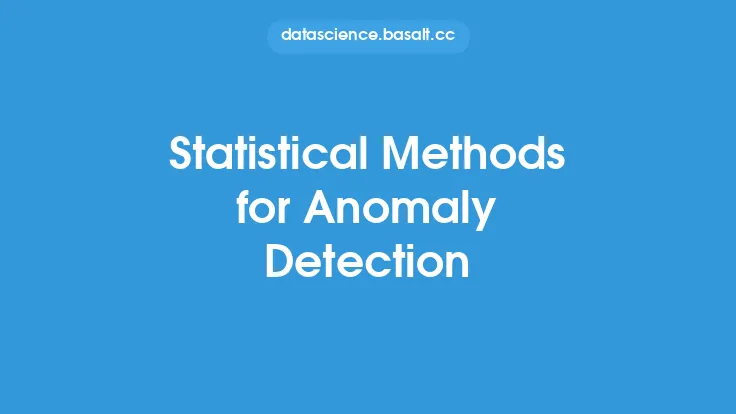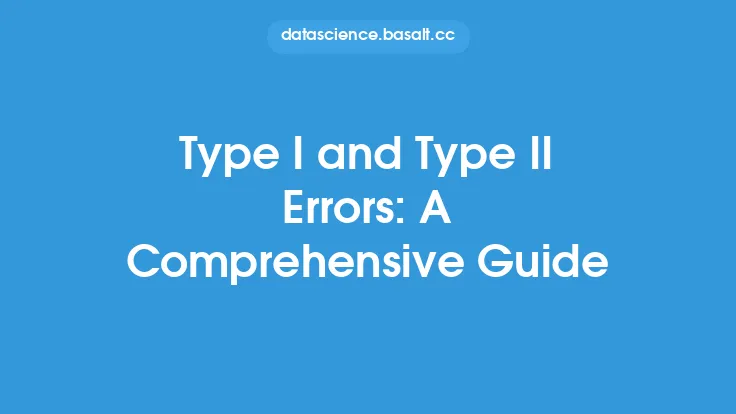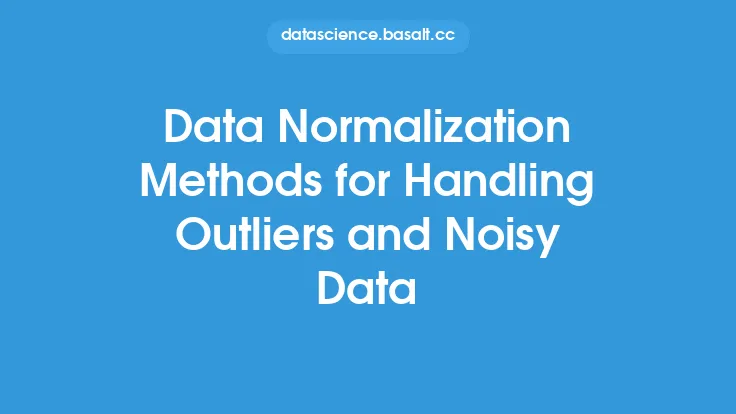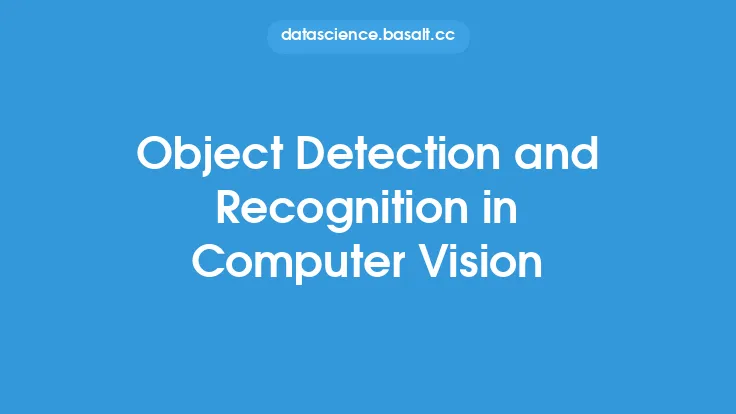Outlier detection and treatment are crucial steps in the data cleaning process, as they help ensure the accuracy and reliability of the data analysis results. Outliers are data points that significantly differ from the other observations in the dataset, and they can be caused by various factors such as measurement errors, data entry mistakes, or unusual patterns in the data. If left untreated, outliers can have a significant impact on the results of statistical models and machine learning algorithms, leading to biased or incorrect conclusions.
Introduction to Outlier Detection
Outlier detection involves identifying data points that are significantly different from the rest of the data. There are several methods for detecting outliers, including statistical methods, distance-based methods, and density-based methods. Statistical methods use statistical tests to identify data points that are unlikely to occur based on the distribution of the data. Distance-based methods use the distance between data points to identify outliers, while density-based methods use the density of the data points to identify outliers. Some common statistical methods for outlier detection include the Z-score method, the Modified Z-score method, and the Boxplot method.
Types of Outliers
There are several types of outliers, including point outliers, contextual outliers, and collective outliers. Point outliers are individual data points that are significantly different from the rest of the data. Contextual outliers are data points that are unusual in a specific context, but may not be unusual in other contexts. Collective outliers are groups of data points that are unusual together, but may not be unusual individually. Understanding the type of outlier is important, as it can help determine the best approach for treatment.
Outlier Detection Methods
There are several outlier detection methods, including:
- Z-score method: This method uses the number of standard deviations from the mean to identify outliers. Data points with a Z-score greater than 3 or less than -3 are typically considered outliers.
- Modified Z-score method: This method uses a robust estimate of the standard deviation to identify outliers. It is more resistant to the effects of non-normality and outliers than the traditional Z-score method.
- Boxplot method: This method uses the interquartile range (IQR) to identify outliers. Data points that are more than 1.5*IQR away from the first quartile (Q1) or third quartile (Q3) are typically considered outliers.
- Density-based spatial clustering of applications with noise (DBSCAN) method: This method uses the density of the data points to identify outliers. It is particularly useful for identifying outliers in high-dimensional data.
- Isolation forest method: This method uses an ensemble of isolation trees to identify outliers. It is particularly useful for identifying outliers in high-dimensional data.
Outlier Treatment Methods
Once outliers have been detected, they must be treated. There are several outlier treatment methods, including:
- Deletion: This involves removing the outliers from the dataset. However, this method can be problematic if the outliers are not errors, but rather unusual patterns in the data.
- Transformation: This involves transforming the data to reduce the effect of the outliers. Common transformations include logarithmic and square root transformations.
- Imputation: This involves replacing the outliers with imputed values. Common imputation methods include mean and median imputation.
- Robust regression: This involves using robust regression methods that are resistant to the effects of outliers. Common robust regression methods include least absolute deviation (LAD) regression and least median of squares (LMS) regression.
- Trimming: This involves removing a portion of the data at the extremes. This method can be useful for reducing the effect of outliers, but can also lead to biased results if not done carefully.
Considerations for Outlier Detection and Treatment
There are several considerations that must be taken into account when detecting and treating outliers. These include:
- The type of data: Different types of data may require different outlier detection and treatment methods. For example, time series data may require methods that take into account the temporal relationships between the data points.
- The distribution of the data: The distribution of the data can affect the choice of outlier detection method. For example, non-normal data may require methods that are robust to non-normality.
- The context of the data: The context of the data can affect the choice of outlier detection and treatment method. For example, outliers in a medical dataset may require different treatment than outliers in a financial dataset.
- The potential consequences of incorrect outlier detection and treatment: Incorrect outlier detection and treatment can have significant consequences, including biased or incorrect results. Therefore, it is essential to carefully evaluate the outlier detection and treatment methods and to consider the potential consequences of incorrect outlier detection and treatment.
Best Practices for Outlier Detection and Treatment
There are several best practices that can be followed for outlier detection and treatment. These include:
- Using multiple outlier detection methods to confirm the results
- Carefully evaluating the outlier detection and treatment methods to ensure they are appropriate for the data and the research question
- Considering the potential consequences of incorrect outlier detection and treatment
- Documenting the outlier detection and treatment methods and the rationale for their use
- Using robust regression methods and other methods that are resistant to the effects of outliers
- Avoiding deletion of outliers unless they are clearly errors
- Using transformation and imputation methods to reduce the effect of outliers
- Trimming the data carefully to avoid biased results
Common Challenges in Outlier Detection and Treatment
There are several common challenges in outlier detection and treatment. These include:
- Non-normality: Non-normal data can make it difficult to detect outliers using statistical methods.
- High-dimensional data: High-dimensional data can make it difficult to detect outliers using distance-based and density-based methods.
- Noise: Noise in the data can make it difficult to detect outliers.
- Contextual outliers: Contextual outliers can be difficult to detect, as they may not be unusual in all contexts.
- Collective outliers: Collective outliers can be difficult to detect, as they may not be unusual individually.
Future Directions in Outlier Detection and Treatment
There are several future directions in outlier detection and treatment. These include:
- Developing new outlier detection methods that can handle high-dimensional data and non-normality
- Developing new outlier treatment methods that can handle contextual and collective outliers
- Using machine learning and deep learning methods for outlier detection and treatment
- Using ensemble methods to combine the results of multiple outlier detection methods
- Developing methods for outlier detection and treatment in real-time data streams
- Using visualization methods to help identify and understand outliers.





